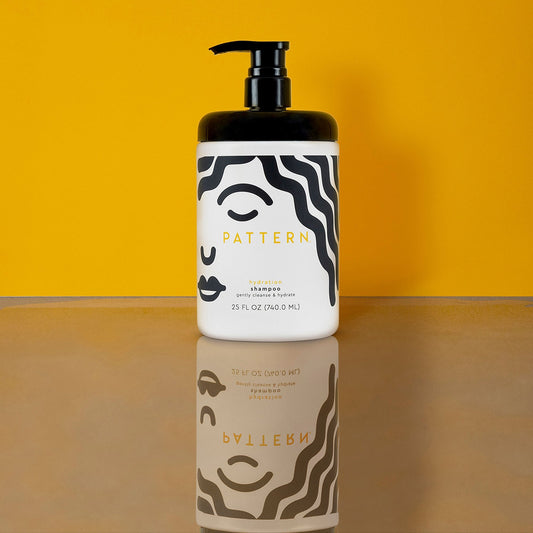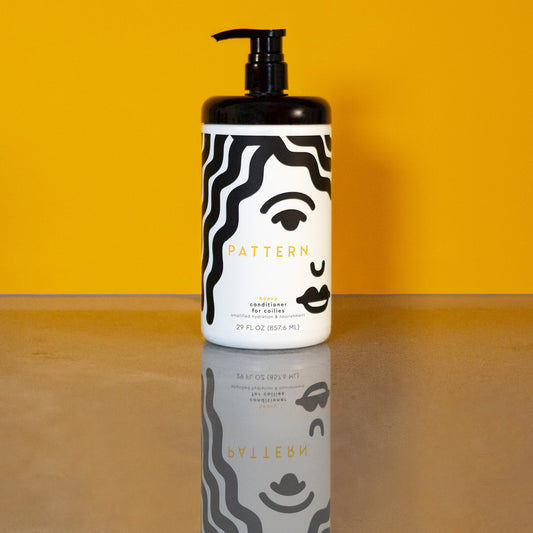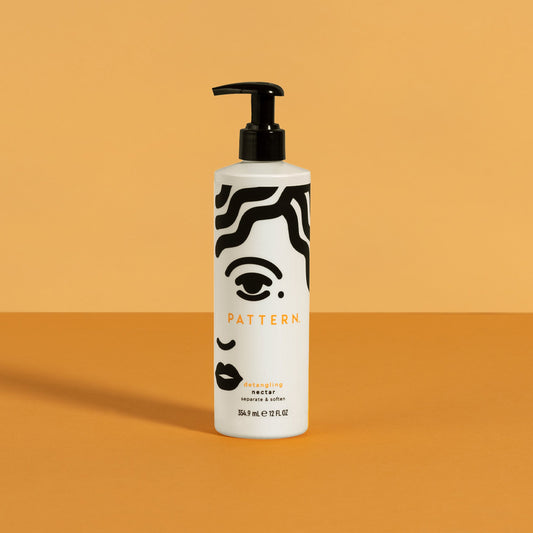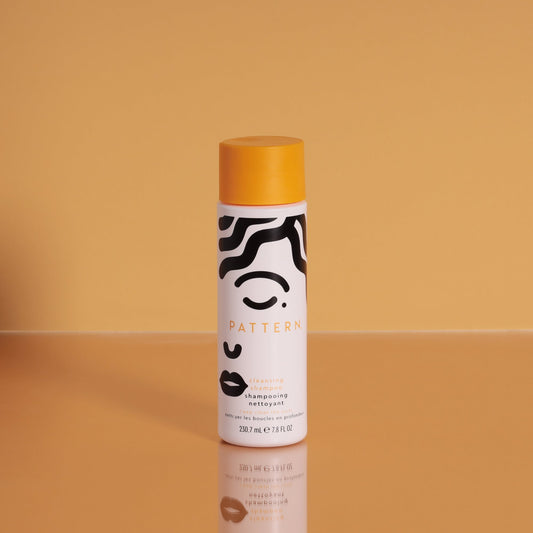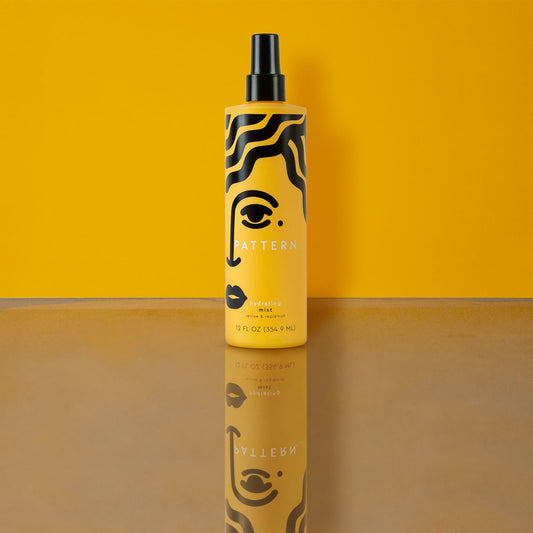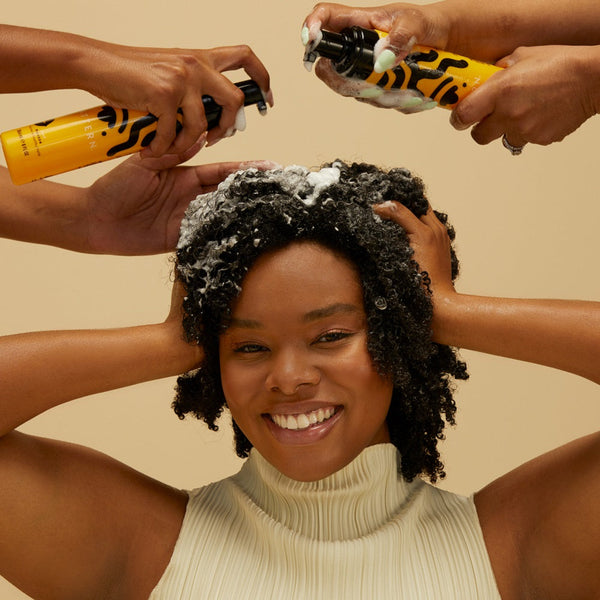Do you know your hair porosity? Understanding your hair porosity will help you better treat and care for your beautiful curls and coils. Let’s explore the differences between low porosity hair and high porosity hair, how to care for each hair type, and find out whether your hair’s porosity can change over time. If you’re new on your natural hair journey or want to learn more about your hair porosity and type, stay tuned to get all your hair porosity questions answered.
What is hair porosity?
You might’ve heard the term “hair porosity” used within the natural hair community, but maybe there’s more to learn. Knowing what type of hair porosity you have is going to be a game changer in elevating your hair care routine and maintaining the health of your hair. Hair porosity is the hair’s ability to absorb and retain moisture. Hair porosity is determined by the shape and size of the cuticles in your hair and how well your hair strands penetrate the cuticle layer of the hair shaft. Understanding your hair porosity can help you determine which curly hair products to use and what techniques to incorporate into wash day and beyond. There are three types of hair porosity: low, medium, and high. We will focus on low and high, since medium porosity doesn’t require as much maintenance.
What are the differences between low vs high hair porosity?
Let’s tap into the potential of your curls and coils by learning the differences between low vs high porosity hair. Low porosity is when your hair is water-resistant, making it harder for moisture to be absorbed into your strands. High porosity hair easily absorbs moisture, but it’s harder for the hair to retain or hold onto that moisture. Each hair porosity level has different characteristics and signs. Learn about the different characteristics of both types of porosity to determine which one you might have.
Low porosity hair
The cuticle layer of low porosity hair is tightly overlapped which creates a barrier, making it trickier for your hair to absorb moisture and get the hydration it needs to maintain its health. Here are some characteristics of low porosity hair:
- Products sit on your hair
With low porosity hair, you may notice products sit on the surface of your hair and take longer to absorb into the strands.
- Hair is more susceptible to buildup
You may have product buildup because the products are slow to penetrate the shaft of the hair.
- Your strands are easily weighed down
When you put product on low porosity hair and it doesn’t absorb, it can cause the hair to look and feel weighed down.
- It takes longer for your hair to get completely wet
Since low porosity hair can be resistant to moisture, it can be difficult for water to fully penetrate the hair.
- It takes longer for your hair to dry
Once your hair does take in water or moisture, you may find that it takes longer to dry.
- Your hair is resistant to color treatments
Low porosity hair can be resistant to chemical or color treatments.
High porosity hair
High porosity hair has a more open cuticle, creating a high absorption and withdrawal of moisture. High porosity has a love, hate relationship with water and can easily absorb it in the shower or when applying product, but it also struggles to retain it for long. This can result in damage and leave the hair feeling dull. Here are some characteristics of high porosity hair:
- Looks or feels dry
- Prone to frizz
- Prone to breakage
- Tangles easily
- Hair easily and quickly becomes fully wet
- Absorbs product quickly
- Air dries very quickly
What causes low or high hair porosity?
Our hair porosity is a result of the shape and size of our hair strands determined mostly by our DNA. Tighter textured hair is naturally more porous. The cuticles of natural hair are typically looser, allowing moisture to go in and out easily. Low porosity hair is typically a result of your genetic makeup and cannot be caused by any chemical or heat damage. Your hair can have a high porosity naturally, but can also be caused by damage from heat styling, over chemically processing or color treating your hair, and the climate or environment you’re in.
How do I know if my hair has low or high porosity?
Pay attention to how your hair reacts to moisture and think about which characteristics of low and high porosity your hair most aligns with. You can also learn more about your hair's porosity by trying the hair porosity test.
Can my hair porosity change over time?
Hair porosity is partly determined by genetics but our age, hormone levels and more importantly, the way we treat our hair can also affect its porosity. Chemically processing our hair with relaxers or color treatments, for example, can open up or close the cuticle of our hair shaft, causing the porosity of our hair to change. Even our environment, constant friction on our hair and heat damage can affect our hair's relationship with moisture, changing its porosity level. As we age gracefully, our bodies and hair change with us and can change our hair's porosity over time. Experiencing the beauty of a pregnancy or the difficulty of a health complication, your hormone levels can impact your hair and its porosity, as well. Treating your hair with the proper care, products and techniques can help your hair stay healthy and hydrated.
What does highly porous hair need?
If you condition and moisturize your hair often but it still seems to feel dehydrated, you may just be using the wrong products for your high porosity hair. The good news is there are many different high porosity hair products and tips to help your hair lock in the moisture and keep your curls refreshed and nourished. On your next trip to restock on all your hair and beauty products, take a look for the following products to treat all your high hair porosity needs.
A hydrating or moisturizing product like PATTERN’s Hydration Shampoo will properly cleanse your hair without stripping strands of its natural oils.
Conditioners containing moisturizing ingredients like essential oils or Shea butter will help to boost moisture retention. Using a Heavy Conditioner or Deep Conditioner is a must for highly porous hair to help not only absorb moisture, but ensure that it stays locked in.
Using thicker products that are cream-based, like PATTERN’s Leave-In Conditioner, adds an additional barrier to help highly porous hair retain its moisture.
High porosity hair is prone to dryness and breakage, so your strands will require a hydrating hair mask from time to time to penetrate the hair shaft with intense moisture and protect the hair from damage. Experiment with your hair to see which treatments give your curls the nourishment and definition they deserve. Here are two types of treatments to try out:
- Protein treatment: Applying a regular deep conditioner may not always cut it with the needs of high porosity hair. A protein treatment will help repair and rebuild the strength of your curly hair, improve its elasticity and prevent breakage.
- Hot oil treatment: To protect and nourish high porosity hair, a jojoba hot oil treatment is perfect. Hot oil treatments increase the strength of your strands, reduce frizz and split ends. Common oils to use on natural hair include coconut, olive, argan, avocado, olive and jojoba oil.
What does low hair porosity need?
Those with low porosity hair usually apply more and more product thinking that will help give it the proper amount of moisture to absorb into the hair. However, because your hair is water and moisture-resistant, applying a lot of product can create buildup. One of the most important low porosity hair tips is to focus on using the right product as opposed to the amount of product. Learn about all your future favorite products and hacks to help your coils absorb moisture better.
Look for low porosity hair products that are lightweight and contain ingredients that can easily penetrate the hair shaft. This includes products like honey, glycerin, aloe vera, and vitamin b5.
Since low porosity hair is prone to product buildup it’s key to use a curl cleansing shampoo that will deeply cleanse the scalp.
Lighter or diluted conditioners won’t sit on your head and will absorb into your hair strands. Milk leave-in conditioners and spray leave-in conditioners, such as PATTERN’s Hydrating Mist, are light and great for low porosity hair.
Low porosity hair should be wet while applying products to the hair, but not soaking wet While your hair is damp the product has a better chance of absorbing. If your hair is too wet, the water can create a barrier, blocking room for products to penetrate your hair. For your next wash and go, wait until your hair is no longer soaking to apply your creams and gels.
Low porosity and high porosity hair do share a few things in common, but the main difference is in how well they absorb and retain moisture. Low porosity hair is water-resistant and has a harder time absorbing moisture. If you have low porosity hair you might notice frequent buildup and that your hair takes a long time to dry. High porosity hair can easily absorb moisture but it has trouble when it comes to holding onto it. You might have high porosity hair if your hair becomes wet or absorbs product quickly but tends to feel dry soon after applying moisturizer. You can develop high hair porosity over time from heat damage or over-chemically processing your hair. To remain optimal hair health, try avoiding heat tools, over-manipulating your hair, and maintaining a consistent hair care routine. For the low porosity people, applying your natural hair styling products while your hair is damp instead of soaking wet, is the hack you didn’t know you needed. High porosity curls, coils, and kinks are going to be loving all the moisture they hold onto with cream-based leave-in conditioners and a monthly protein treatment. Wash day just became even more relaxing and enjoyable than you thought it could be!
References:
- Rachel Nall. "How to Care for Low Porosity Hair". Healthline. Sep 12, 2019. https://www.healthline.com/health/low-porosity-hair#low-porosity-hair-care
- Chloe Metzger. "How Figuring Out Your Hair Porosity Is the Key to Perfect Curls". Cosmopolitan. May 18, 2021. https://www.cosmopolitan.com/style-beauty/beauty/a28408775/hair-porosity-curls/
- Chelsea Candelario. "We Asked a Derm: What Is Porosity, and What Does It Mean for Your Hair?". Pure Wow. Jun 17, 2020. https://www.purewow.com/beauty/what-is-porosity




